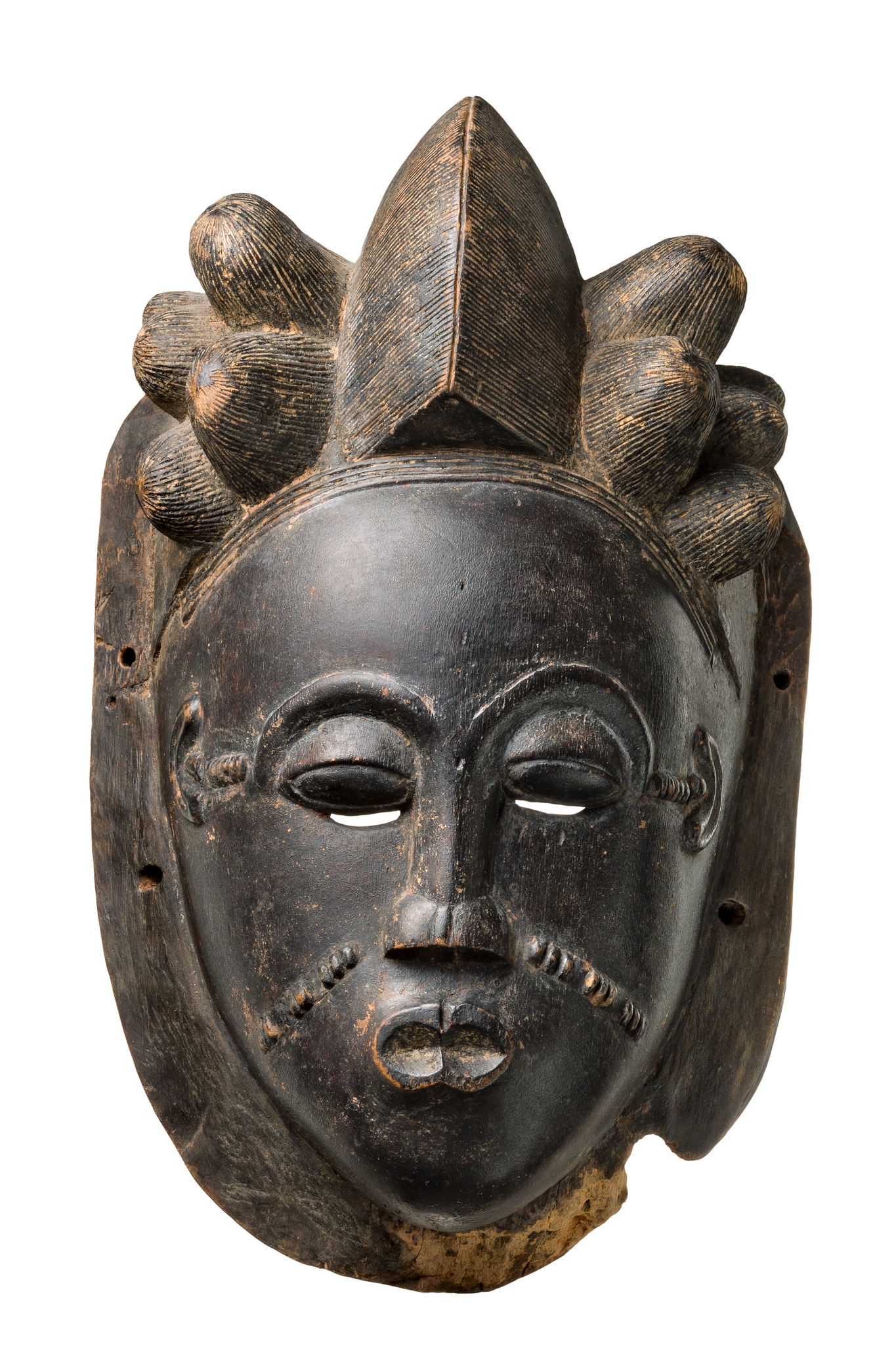Magnifique masque portrait "ndoma" · Côte d'Ivoire, Baoulé · ID: 3047077
Rolf Huisgen, Munich, Germany (1974)
Description
wood, inventory number “025-070”, missing part (insect caused damage)
These masks appear at dances (“mblo”) which serve for entertainment, but have also been observed at funeral ceremonies.
They can be recognized by their facial features, their hairstyles, and their scarifications as depictions of known men and women of the village and appear in frequent public performances over many decades.
“Ndoma” (=“double” or “namesake”) is consdidered the true double of the person it portrays, and it never performs unless accompanied in the dance by that person.
The dancers wearing these masks characterise, praise, caricature or criticise the persons represented, to the enjoyment of the audience.
The masks are often commissioned by men and are meant to celebrate a woman’s beauty or her special talent for dancing.
L’objet Magnifique masque portrait “ndoma” numéro d’objet 3047077, a fait partie de la 95e Vente aux enchères Tribal Art du 24 octobre 2020. L’objet portant le numéro de lot 79 a atteint un prix de vente de 3 800 € pour un prix d’adjudication de 2 500 €.
Vous trouverez d’autres Masques et autres types d’objets populaires sur nos pages thématiques associées. Notre page sur le thème Art africain pourrait également vous intéresser.




